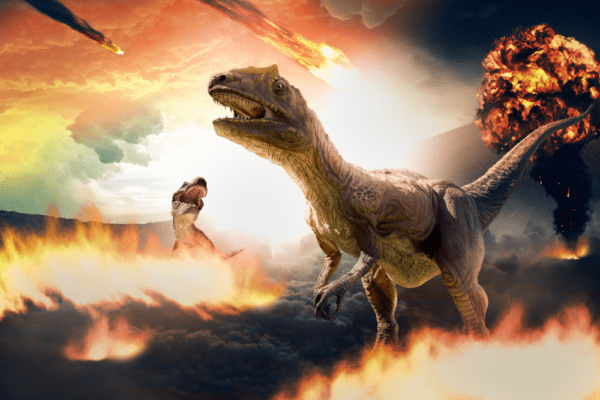The asteroid that killed the dinosaurs was about six miles wide. That might not sound like much, but it was enough to cause widespread destruction. The impact of the asteroid caused a massive shockwave that destroyed everything in its path.
The asteroid also created a huge cloud of dust and debris that blocked out the sun, causing the Earth to cool down significantly. This cooling effect is thought to have contributed to the dinosaurs’ extinction.
Scientists are still studying the effects of the asteroid and its role in the extinction of the dinosaurs. But one thing is for sure: the asteroid was big enough to cause a lot of damage.
Table of Contents
Effects of the asteroid and its role in the extinction of the dinosaurs
The Effects of the asteroid and its role in the extinction of the dinosaurs are as follows:
- The asteroid that hit Earth 65 million years ago was about 15 times the size of Mount Everest.
- The asteroid caused global climate change, which led to the extinction of dinosaurs and many other species. It also created a huge crater, which is now the Gulf of Mexico.
- The asteroid hit Earth at a speed of about 20 kilometers per second. This caused an explosion that released energy equivalent to 100 million megatons of TNT. The impact generated a shock wave that traveled around the globe. It caused widespread damage to the environment and climate.
Likely origin of asteroid and what we know about
Asteroids are small, airless rocky worlds orbiting the Sun. Although there are millions of them, they are often grouped together because they share similar characteristics.
Scientists believe that the asteroid was part of a group of asteroids called the Baptistina family. This family formed about 160 million years ago when a much larger asteroid broke apart. The pieces then spread out and eventually one of them hit Earth.
This event happened about 65 million years ago and is known as the Cretaceous-Tertiary, or K-T, mass extinction. It was the largest mass extinction on Earth, causing the death of 75 percent of all plants and animals.
The asteroid that killed the dinosaurs was likely just one piece of a much larger event. But it was still a catastrophic event that changed the course of life on Earth.
The asteroid that killed the dinosaur’s size in comparison to modern-day objects
The asteroid that killed the dinosaurs was about 6 miles wide. To put that in perspective, here are some comparisons to modern-day objects:
- The Empire State Building is only 1/45th the size of the asteroid.
- It would take less than 3 minutes for the asteroid to completely destroy New York City.
- The entire country of Italy could fit inside the asteroid with room to spare.
In short, the asteroid was absolutely massive and would have caused devastation on a global scale. It’s no wonder that it was able to wipe out the dinosaurs!
What is the largest asteroid to hit Earth?

Some of the largest asteroids to hit Earth are as follows:
The Vredefort crater in South Africa
The Vredefort crater is the largest and oldest confirmed impact crater on Earth. The asteroid that created the Vredefort crater was estimated to be about 10 kilometers (6 miles) in diameter.
The Chicxulub crater in Mexico
The Chicxulub crater is believed to be the site of the impact that killed the dinosaurs. The asteroid that created the Chicxulub crater was estimated to be about 15 kilometers (9 miles) in diameter.
The Tunguska Event in Russia
The Tunguska Event was a large explosion that occurred in Siberia in 1908. It is thought to have been caused by an asteroid or comet fragment that exploded in the atmosphere.
The size of the asteroid or comet that caused the Tunguska Event is not known for sure, but it is thought to have been about 30 meters (100 feet) in diameter.
How many asteroids hit Earth daily?
Asteroids hit Earth all the time, but most are so small that they break up in our atmosphere and never make it to the ground. In fact, according to NASA, more than 100 tons of space dust and sand-sized particles fall on Earth every day.
Read Also: When did the Tasmanian tiger go extinct



